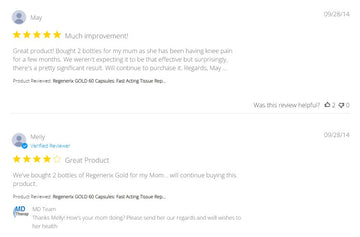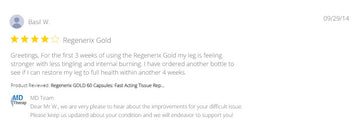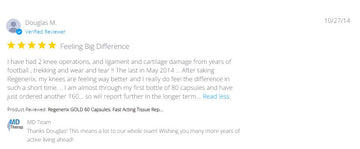Isometric Shoulder Internal Rotation (Elbow at Side): Quiet Front-Shoulder Strength That Stabilizes the Joint
by MD therapeutics on Aug 17, 2025
Why isometric internal rotation helps (the principles)
-
Centers the ball in the socket: Light holds recruit subscapularis (front cuff) to keep the humeral head seated, which can reduce impingement-y “pinch” during daily tasks.
-
Safe load for irritable shoulders: Because you don’t move, shear/compression spikes stay low while the tendon gets time-under-tension—useful in flare phases, frozen-shoulder stiffness, and early return-to-lift (as cleared by your clinician).
-
Better scapulohumeral rhythm: A towel roll between elbow and ribs creates slight abduction, encouraging lower trap/serratus support so the shoulder blade stays calm instead of shrugging.
-
Posture carryover: Trains everyday stability for typing, carrying, and reaching without provoking symptoms.
How to do it (precise, range-aware)
Setup:
-
Stand tall. Elbow bent 90°, forearm across the belly. Place a towel roll between elbow and ribs (light squeeze). Shoulder blades soft down/back; neck long.
Choose one option:
-
Doorframe press: Inside forearm/wrist against a doorframe. Press inward (as if rotating the forearm toward your belly) but don’t let it move.
-
Band hold (anchor beside you): Band looped to your side at elbow height. Step out for light tension and hold the inward pull without rotating.
-
Ball squeeze to wall: Small ball between palm and wall at belly height; press palm gently as you keep elbow glued to towel.
Dose & effort:
-
Intensity: ~20–40% effort (light–moderate), pain ≤3/10 during/after.
-
Holds: 5–10 seconds each.
-
Sets/Reps: 2–3 sets × 6–10 holds per side, 1–2×/day during flares; 3×/week for maintenance.
-
Progressions: Longer holds (up to 15 s), slight band increase, then transition to slow internal-rotation reps through a small, pain-free arc and integrate with elevation work.
-
Stop/modify if: Night pain worsens, pain spikes >3/10, or symptoms radiate past the elbow.
Limits of exercise alone
-
Systemic drivers (sleep, stress, diet, metabolic health) still influence pain and recovery.
-
Flares cap training load, creating stop–start progress.
-
Capacity gaps: Isometrics calm things down but don’t fully restore range, endurance, or overhead control—you’ll still need progressive cuff/scapular strengthening.
-
Tendon/capsule remodeling is slow: Expect months, not days.
Why add nutritional correction
-
Improve circulation so cuff, bursa, and capsule receive oxygen/nutrients after sessions.
-
Promote repair with structural inputs (e.g., collagen peptides, hyaluronic acid) that your holds help “signal” into tissue.
-
Reduce excessive inflammation so daily practice stays tolerable and consistent.
-
Avoid tissue damage by buffering oxidative/catabolic stress from repeated loading.
Botanicals & nutrients often paired with shoulder-friendly rehab
(Blends traditional lore with published research; evidence ranges from promising to mixed. Check interactions and personal suitability with your clinician.)
-
Ginger (Zingiber officinale): Ayurveda/East Asian traditions for circulation and “wind-damp” aches; standardized extracts show modest symptom support for some with osteoarthritis.
-
Turmeric / Curcumin (Curcuma longa): Longstanding Ayurvedic use; bioavailability-enhanced curcumin has reduced arthritis pain and improved function in multiple studies; culinary turmeric alone is low in curcumin.
-
Boswellia / Frankincense (Boswellia serrata): Ayurveda’s shallaki; standardized extracts associated with improved pain/function in OA cohorts.
-
Winter Cherry / Ashwagandha (Withania somnifera): Adaptogen for resilience; trials suggest immunomodulatory effects and symptom support that may aid training tolerance.
-
Collagen Peptides (Type II focus): Provide peptides that may support cartilage/connective-tissue metabolism—useful with controlled isometric loading.
-
Hyaluronic Acid (oral): Contributes to lubrication/viscosity; used to support smooth, comfortable shoulder motion.
-
Cat’s Claw (Uncaria spp.): Amazonian tradition for “rheumatism”; small trials show short-term pain improvements, though evidence remains limited.
The practicality problem
-
Food-only dosing is hard: Daily, research-like intakes of curcumin or ginger via meals are impractical.
-
Pill burden & cost add up: Buying six–seven separate products (ginger, turmeric, boswellia, ashwagandha, collagen, HA, cat’s claw) means many capsules and a higher monthly spend—versus one comprehensive formula.
A convenient all-in-one option: Regenerix Gold™
Prefer isometric IR + nutrition without juggling bottles?
-
What’s inside: Hydrolyzed Type II Collagen, Hyaluronic Acid, and a proprietary blend of Ginger, Turmeric, Frankincense (Boswellia), Cat’s Claw, and Winter Cherry (Ashwagandha)—the same seven ingredients discussed above—combined to promote healthy joint and muscle function and support everyday recovery.
-
Need only: 2–3 capsules daily.
-
Price: $98 a bottle.
-
Why it fits here: One product covering seven evidence-linked ingredients is simpler—and typically more cost-effective—than buying 5–7 separate supplements.
-
Track record: Recommended by doctors and physical therapists internationally for about a decade (individual clinician views vary).
Supplements support healthy function; they don’t diagnose, treat, or cure disease. Check interactions (e.g., anticoagulants with turmeric/ginger/boswellia) and suitability with your clinician.
This week’s shoulder mini-plan
-
Daily (or flare phase): Isometric internal rotation 2–3 sets × 6–10 holds (5–10 s), pain ≤3/10.
-
3×/wk add-ons:
-
Isometric external rotation (elbow at side) 2–3×6–10 holds,
-
Scapular retractions (band rows) 2–3×12–15,
-
Wall slides (towel under forearms) 2–3×8–10.
-
-
Progress when calm: Add slow banded IR through a tiny, pain-free arc; pair with overhead progression only when symptoms remain quiet for 7–10 days.
-
If symptoms spike: Halve hold time/effort; return to pendulums; check in with your clinician if night pain persists.



